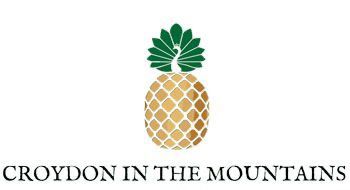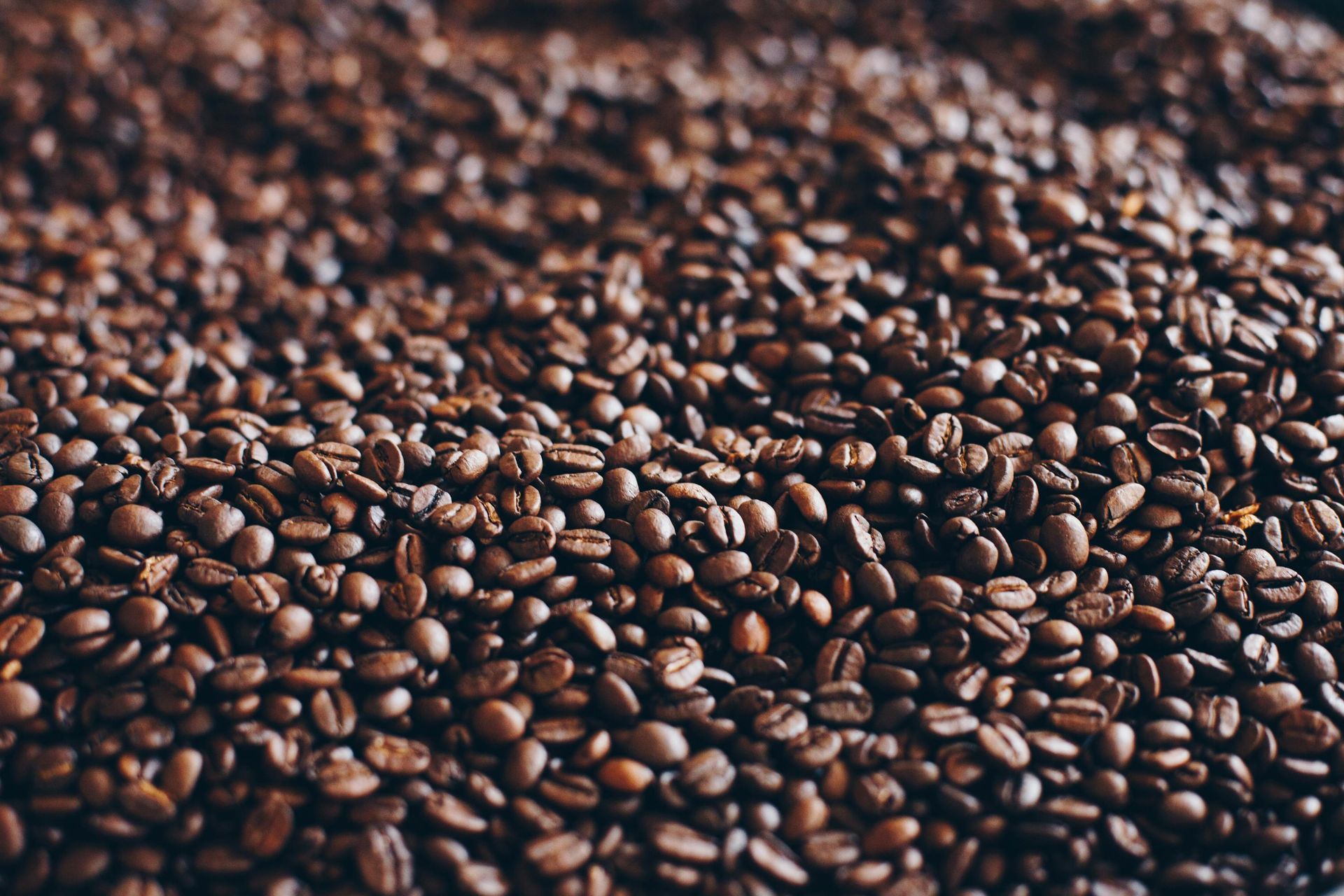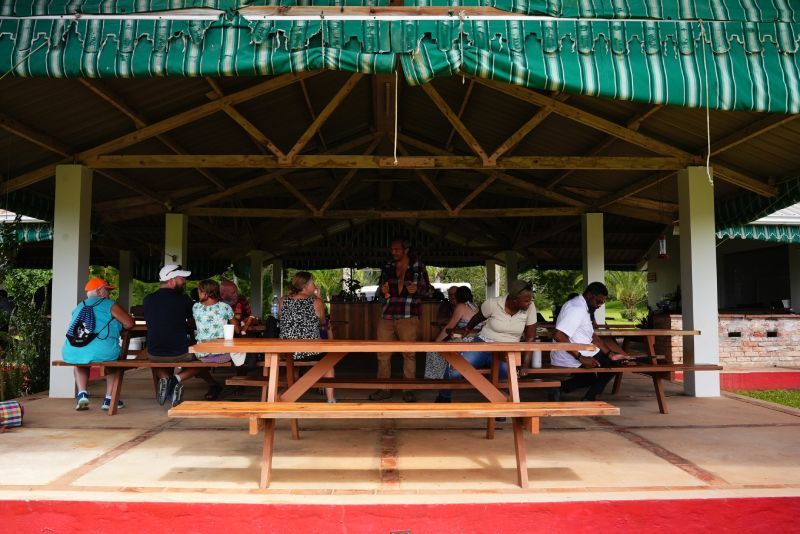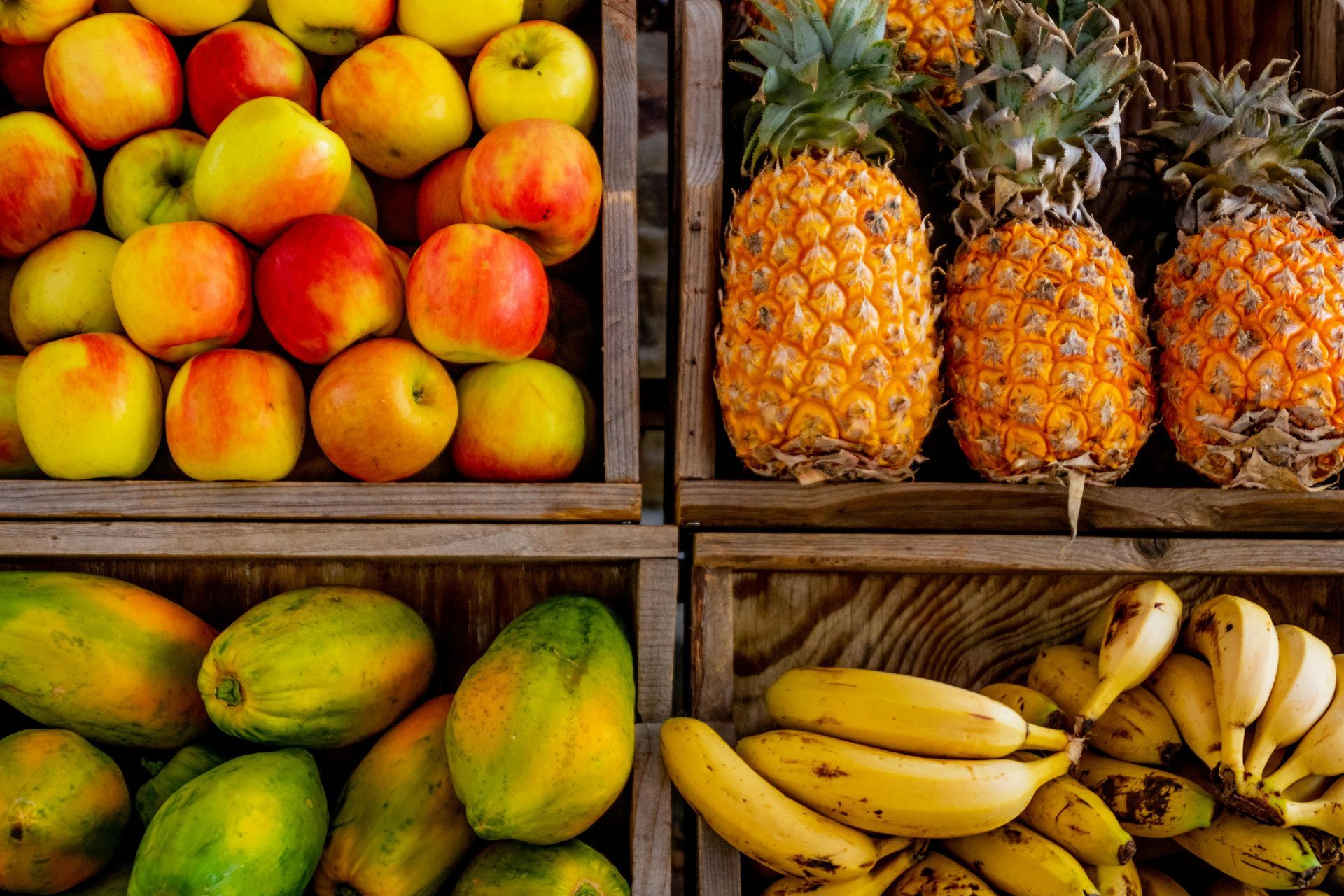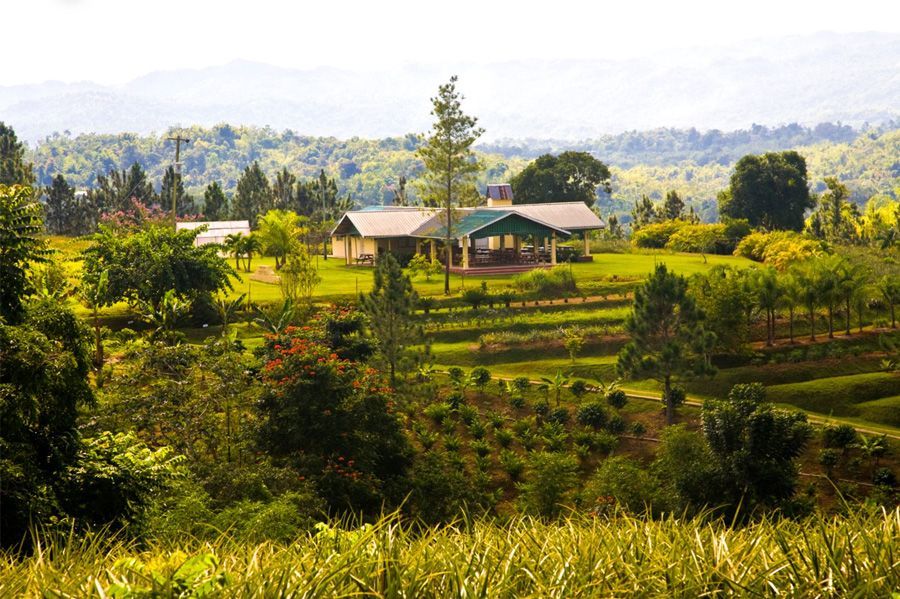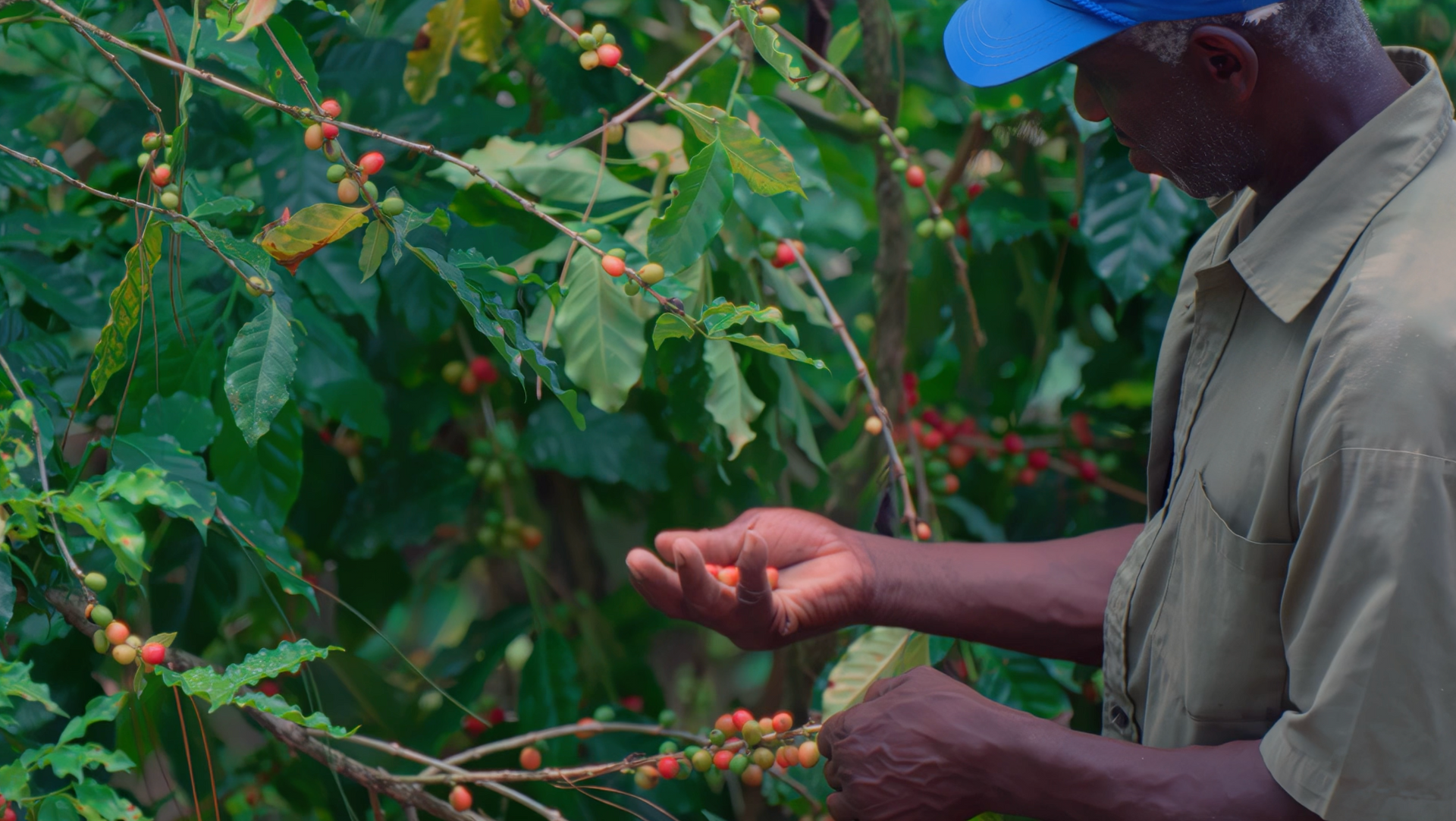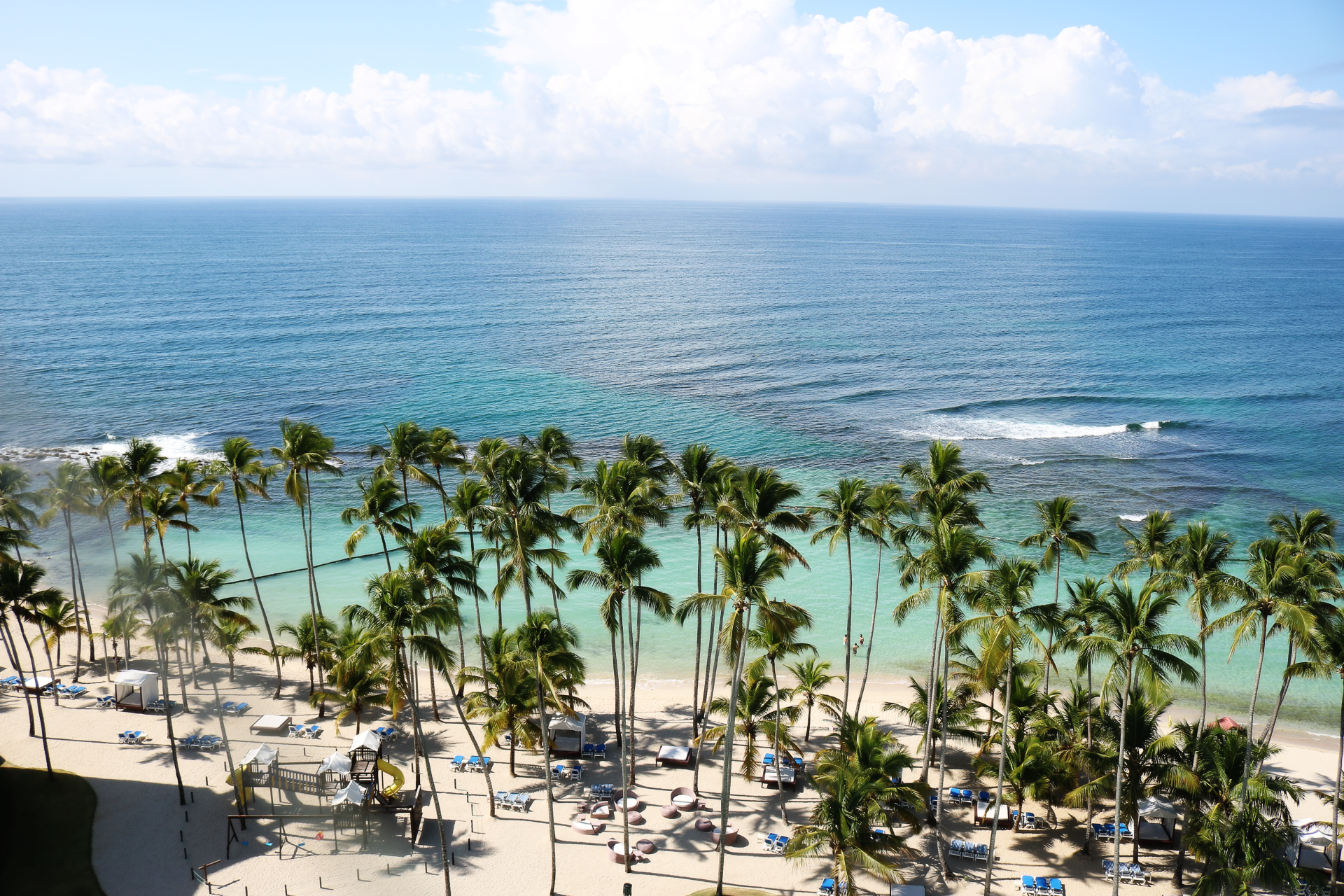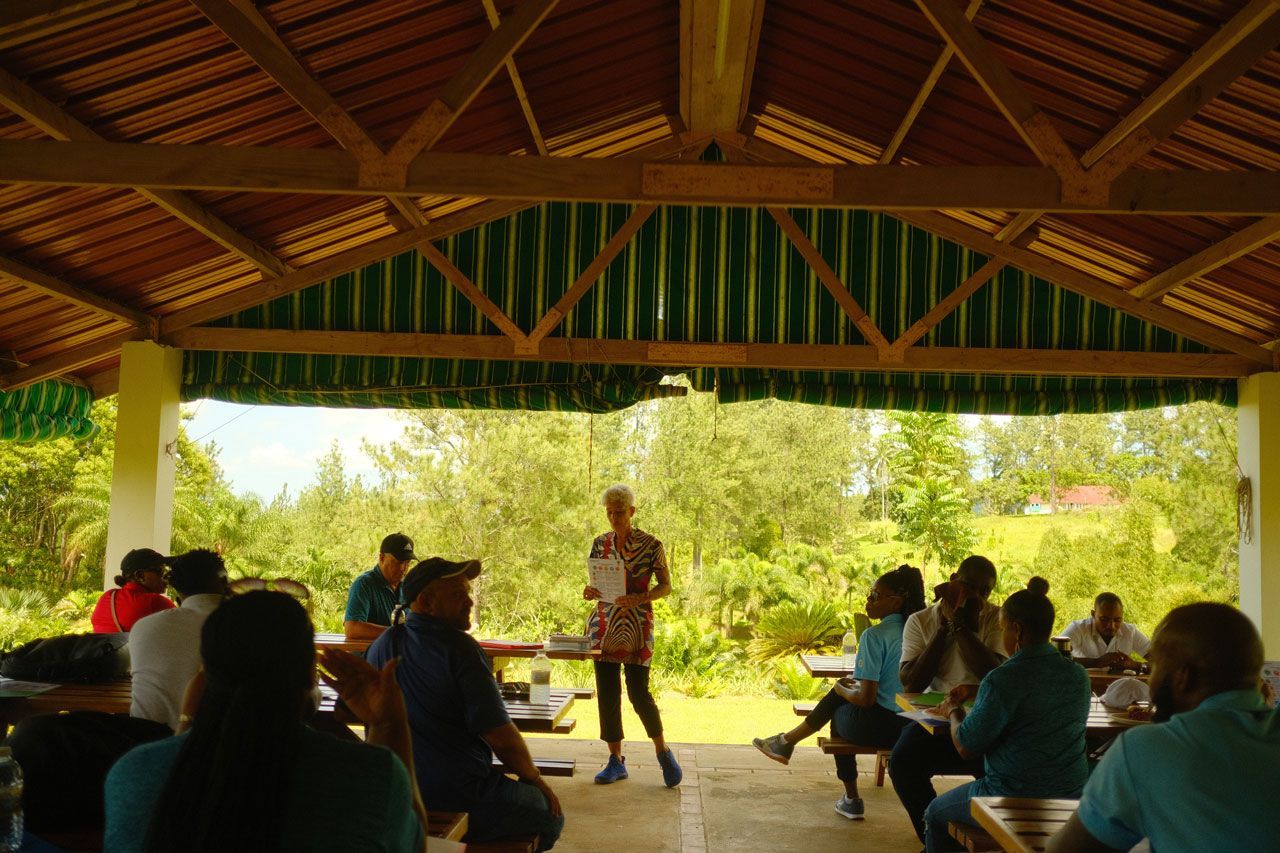The Great Houses of Jamaica: History and Architecture
Jamaica, known for its vibrant culture and stunning natural beauty, is also home to a wealth of architectural gems. The island's great homes, often nestled in lush landscapes and steep in history, offer a fascinating glimpse into Jamaica's past. These stately residences showcase a blend of architectural styles and cultural influences, reflecting the island's rich and diverse heritage. In this article, we will take you on a journey through some of
Jamaica's Great Houses and the history behind their architecture.
Croydon Estate
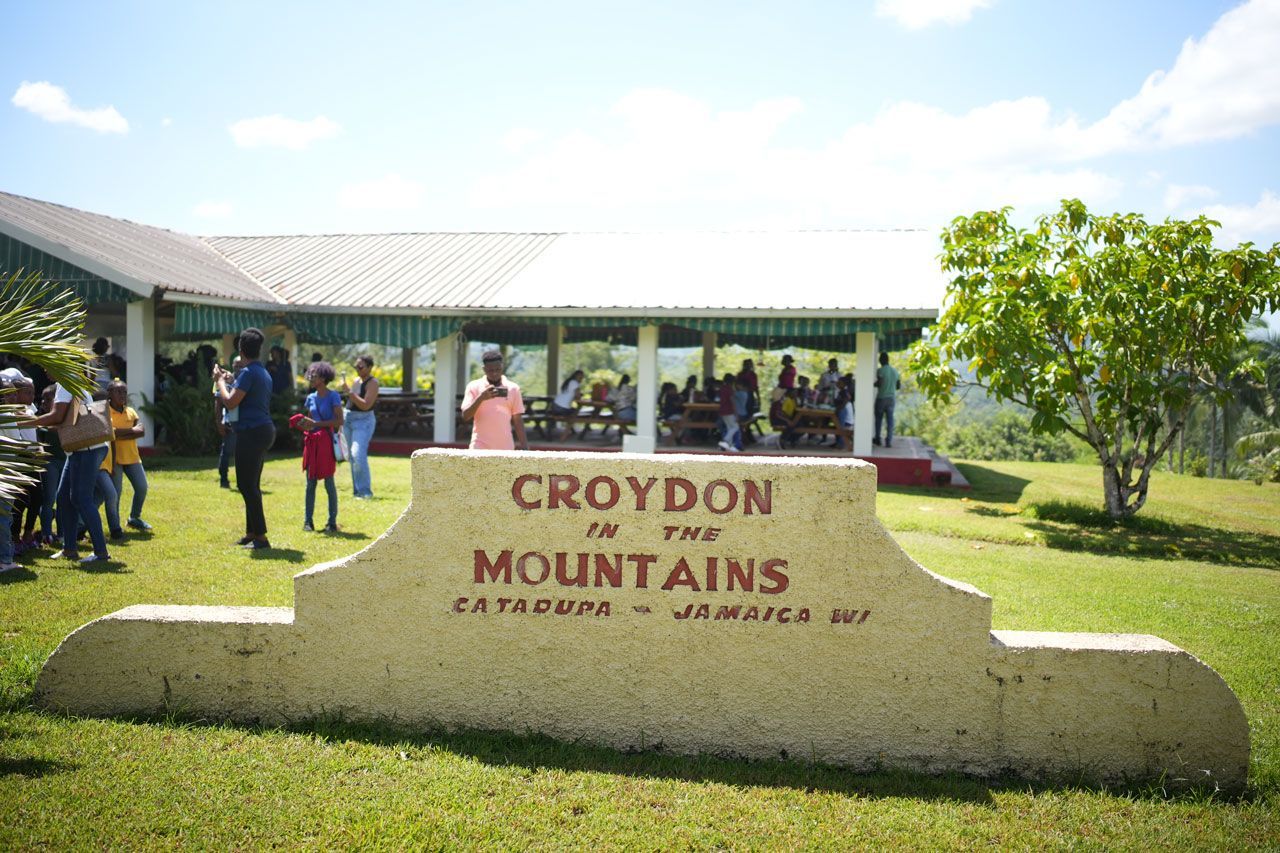
Nestled in the heart of Jamaica’s lush countryside, the Croydon Estate offers a unique glimpse into the island's rich agricultural traditions. Known for its expansive coffee and pineapple plantations, this estate isn't just about scenic beauty; it's a place where history and modern farming techniques converge. Visitors to Croydon can engage directly with the land, experiencing the fresh tastes and deep heritage that make Jamaican agriculture truly special.
At Croydon Estate, you can follow the trail from bean to cup. The estate provides educational tours that explain the process of coffee and pineapple cultivation, emphasizing sustainable practices that are crucial for preserving Jamaica's natural resources. Plus, there’s nothing quite like tasting a pineapple that’s just been picked — it’s a burst of flavor that’s hard to match!
Rose Hall Great House
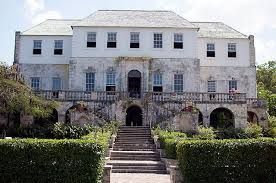
Perched on a hill overlooking the Caribbean Sea, Rose Hall Great House is not just an architectural gem—it's a centerpiece of Jamaican heritage. Built in the 1770s, this Georgian-style mansion dazzles with its grand stone façade and expansive verandas, epitomizing elegance and symmetry. But have you heard about the mysterious tales tied to it?
The Ghostly Legends of Rose Hall
Annie Palmer, often referred to as the "White Witch of Rose Hall," is a legendary figure in Jamaican folklore. She was reportedly the mistress of Rose Hall, a grand plantation house built in the 1770s in Montego Bay, Jamaica. According to legend, Annie Palmer was born in England and moved to Haiti with her family, where she learned voodoo practices.
The lore surrounding Annie claims that she married John Palmer, the owner of Rose Hall, and later became infamous for her cruelty. She is rumored to have murdered several of her husbands and numerous slave lovers. Her reign at Rose Hall is said to have been filled with fear and mystery, involving witchcraft, black magic, and murder. Annie Palmer’s story is steeped in the supernatural and continues to be a popular subject in the tales told to visitors of Rose Hall, which has been restored as a museum and tourist attraction.
The Architecture of Rose Hall
Rose Hall Great House is a prime example of Georgian architectural style, renowned for its strict symmetry and ornate interiors. This design was not just about aesthetics; it symbolized power and control during the colonial period. The grand stone base and elegantly stuccoed upper stories showcase exceptional craftsmanship, but they also serve as a reminder of the difficult histories tied to plantation life.
Today, Rose Hall is beautifully restored and functions as a museum, offering guided tours that bring its rich history and stunning architecture to life. Visitors flock here not only to admire its restored beauty but also to feel a chill down their spine as they explore the halls where the infamous White Witch once roamed. Isn't it fascinating how a place can be so beautiful yet so mysterious at the same time.
Devon House
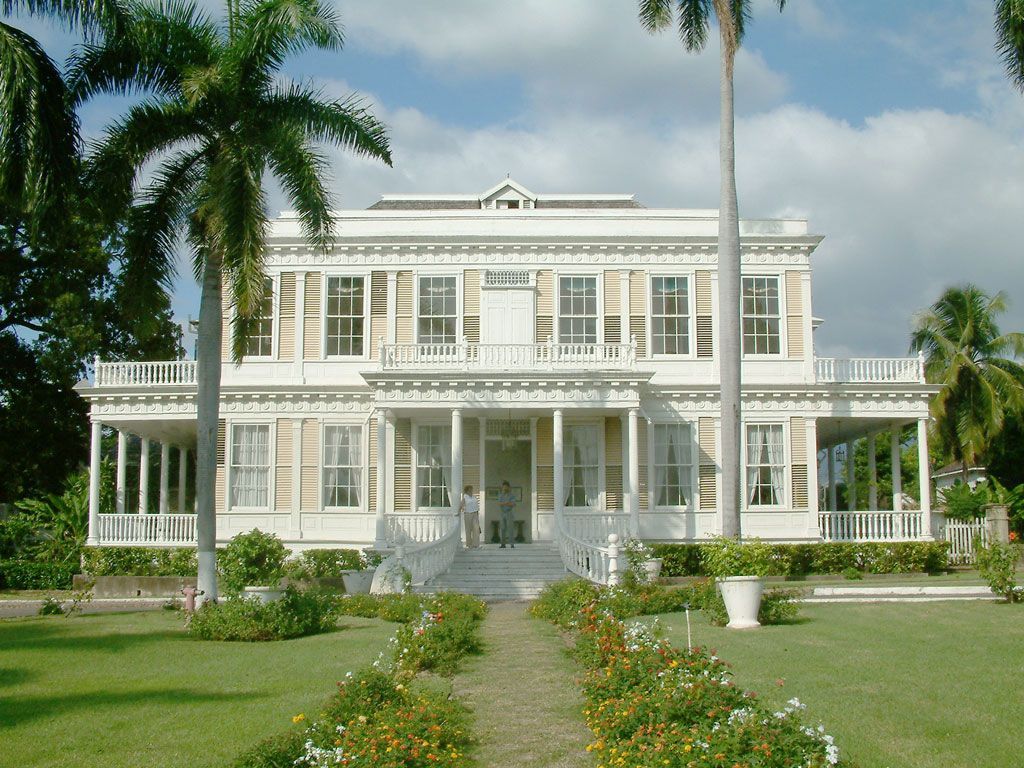
Devon House is a gem of Jamaican history nestled in the heart of Kingston. Built in 1881 by George Stiebel, the country's first black millionaire, this grand old mansion blends Caribbean charm with Victorian flair.
The house is a real eye-catcher, with its gabled roofs and fancy wooden details. Lush gardens surround it, making you feel like you've stepped back in time to Jamaica's heyday.
But Devon House isn't just pretty to look at. Step inside, and you'll get a glimpse of how Jamaica's upper crust lived in the late 1800s. The rooms are packed with history, telling the story of the island's colonial past and its road to independence.
These days, Devon House is more than just a museum. It's become a hotspot for locals and tourists alike. The grounds are dotted with cozy cafes and shops, perfect for soaking up the atmosphere. And don't miss out on Devon House I-Scream – it's practically an institution, serving up flavors that'll give your taste buds a tour of Jamaica.
Greenwood Great House
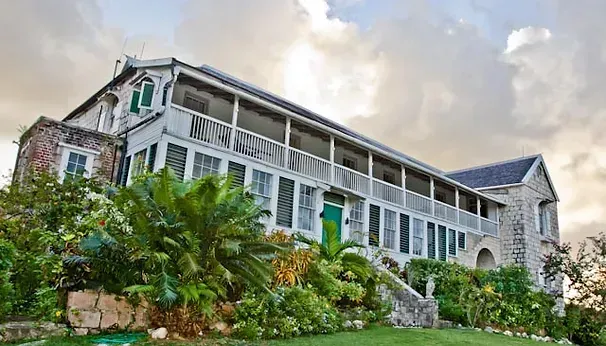
Tucked away in Jamaica's St. James parish, Greenwood Great House is a window into the island's colonial past. This old plantation house, built by the Barrett family in the late 1700s, is one of the few that made it through the slave uprisings without much damage. That means what you see today is pretty much how it looked back then.
Step inside, and you'll feel like you've walked onto the set of a period drama. The rooms are decked out with furniture that's been there since day one, giving you a real sense of how Jamaica's colonial bigwigs lived. There's even a collection of old musical instruments that'll make any music buff's day.
Preservation of Greenwood
Folks at Greenwood Great House are working hard to keep this slice of history alive. They're not just patching up old walls – they're making sure the whole place stays true to its roots. It's all about keeping Jamaica's past alive for the next generation to see and touch.
What's really something is how this old house has weathered the storms of history. While other places crumbled, Greenwood stood strong. Walking through its doors is like stepping into a time machine set to the 1700s. You can almost hear the echoes of plantation life.
Good Hope Estate
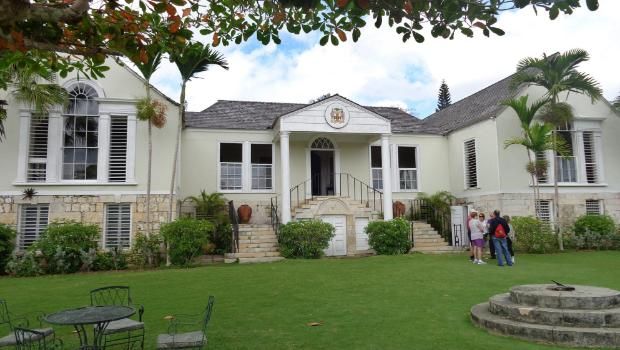
Good Hope Estate, situated in Jamaica's lush Cockpit Country, embodies the island's agricultural legacy and architectural grandeur. Established in the 18th century, this expansive property showcases the quintessential Georgian style in its great house, characterized by balanced proportions and sturdy stone construction. The estate's well-preserved interiors offer visitors a glimpse into the refined lifestyle of Jamaica's colonial era.
The estate's historical significance is deeply rooted in Jamaica's sugar industry. Visitors can explore restored structures such as the water wheel and sugar mill, which provide tangible links to the plantation's productive past. These preserved elements offer valuable insights into the agricultural practices and economic forces that shaped Jamaica's history.
Today, Good Hope Estate stands as a vibrant testament to Jamaica's rich cultural tapestry. Its Georgian architecture, historical artifacts, and modern amenities come together to create an immersive experience for visitors. Whether exploring the great house, learning about sugar production, or enjoying outdoor activities, guests at Good Hope Estate can appreciate the multifaceted nature of Jamaica's heritage and its contemporary relevance.
Bellefield Great House
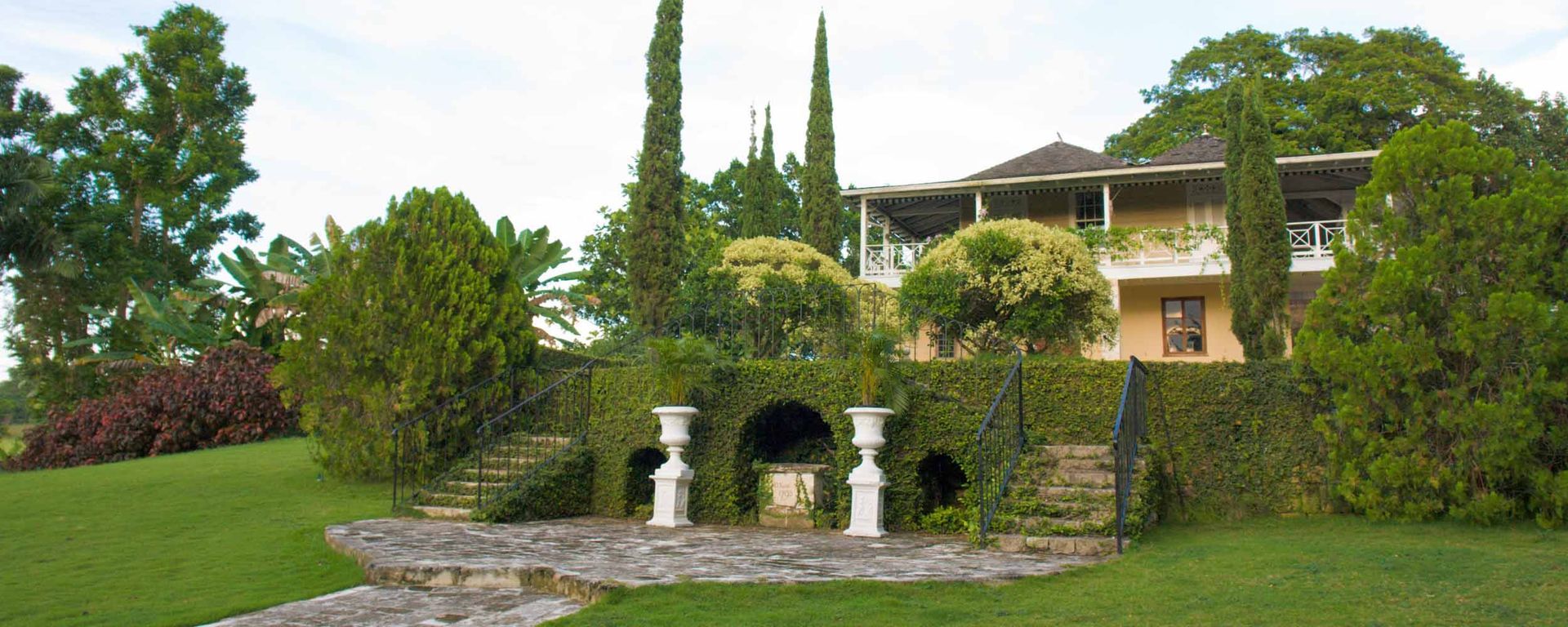
Bellefield Great House, dating back to the 1700s, is a historic sugar plantation estate in Jamaica. It offers visitors a tangible connection to the island's colonial past. The great house's architecture exemplifies enduring colonial design, featuring thick stone walls, high ceilings, and expansive verandas.
Meticulous preservation efforts have maintained Bellefield's authentic charm and historical integrity. The well-kept interiors and surrounding gardens provide a vivid snapshot of Jamaica's plantation era. Visitors can explore these spaces, gaining insights into the lifestyles of both the plantation owners and the workers who shaped the estate's history.
Today, Bellefield Great House serves a dual purpose as both a historical site and a modern event venue. This unique blend allows the property to maintain its relevance while honoring its rich heritage. Guided tours offer in-depth information about the estate's history, the sugar production process, and the social dynamics of colonial Jamaica.
Jamaican Homes Offers Stunning Architecture & Landmarks
Jamaica's great homes stand as living monuments to the island's multifaceted history. These architectural marvels offer more than mere aesthetic appeal; they serve as tangible connections to Jamaica's past. Each residence, with its unique design and story, provides invaluable insights into the island's colonial era, its agricultural heritage, and the social dynamics that shaped its development.
Experiencing Croydon Estate: Coffee, Pineapple, and Cultural Tours
Croydon Plantation, nestled in the lush Catadupa Mountains, offers visitors a unique glimpse into Jamaica's thriving agricultural heritage. This working estate seamlessly blends historical significance with modern agricultural practices, providing an immersive experience for those eager to explore the island's rural traditions. The plantation's sprawling grounds showcase Jamaica's diverse crop production, from aromatic coffee beans to sweet pineapples.
Visitors to Croydon Plantation can engage in interactive tours that bring the agricultural process to life. These experiences allow guests to trace the journey of coffee from bean to cup, offering insights into the meticulous cultivation and processing methods that result in Jamaica's world-renowned brews. Similarly, the pineapple fields provide a firsthand look at tropical fruit production, demonstrating the care and expertise involved in growing these iconic Jamaican crops.
